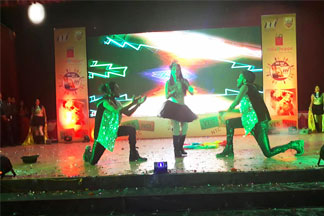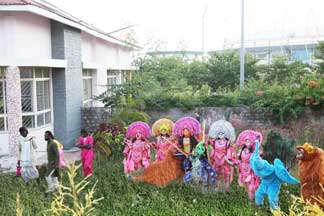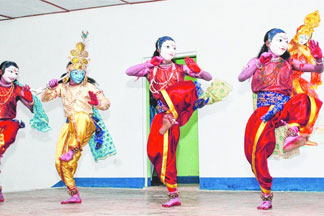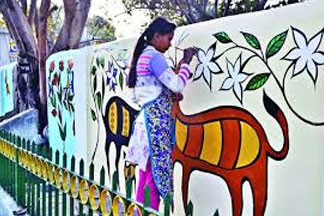Museum
The state museum, Ranchi, comes in the leading museums of eastern India, but here are some of the most important representatives of archaeological Indian history, which we are proud of. Caper hoard: - In the Indian history, the Copper Hoders is a very important place. These temples are important representatives of the Ganges Valley culture. The characteristics of these antiquities, found in places like Red Fort, Intajitkheda, Sapai and Bahadarabad etc. are that they are mostly found in the group, hence they are also called as Kapper Hord. In this collection, antenna swords, harpoons, rings, etc. are found, but manmusive (Anthropomorph) is the most important type of collection that resembles the human shape in the form of the name. Kappar hoders are also found in Jharkhand. But in the eastern region, mainly the shouldered X is found. When Dr. Harendra Prasad Sinha was in charge of the Deputy Director (Archeology), he saw the letter of Giridih's Deputy Commissioner and Superintendent of Police who was sent 2-3 years ago, but the department could not take any cognizance. Was there. It was reported in the letter that seven items of metal were found during the agricultural work at a farm in Giridih's Birni area, whose archaeological significance was also indicated in the letter. In this context, the department was requested to send an archaeologist, which could not possibly be taken by the then archaeological officer. Understanding the importance of the matter, the immediate director of the Giridih administration through the then Director, Shri Anurag Gupta was contacted. It was found that the materials were kept in the Malakhana of Burani police station. In the meantime, from the Bihar cadre, contribution was made by Dr. Sharifuddin to the post of Technical Assistant / Gallery Assistant in State Museum in Jharkhand. He was immediately sent to Giridih and the materials for the collection was sought. Today, these 7 Sheldered X State Museums are displayed in Ranchi and are displayed by the museum and are very important in the museum exhibitions. In the context of Indian history, its date is estimated to be around 1800 BC. The first consignment of the Caper hoard in Jharkhand was received in the year 1915-16 by R. Bush Phut from a place named Baraguna in Hazaribagh. About this time, J. Kogin Brown got 21 flat celts from Ranchi's Barotol. It is clear that there has been sufficient evidence of the Caper Horde culture in Jharkhand. Bronze Hoard: - On July 8, 2009, information about Bronze statue was found near the Shambhu Ferry of Mohul Dangri village in order of archaeological exploration in the Baharagora area of East Singhbhum. Instantly, the idols were examined by visiting the said site. The nine bronze statue of palm-shaped sculptures were Taurus Nath (3), Mahavir (3), Chandra Prabha (1) Ajitnath (1). They have been received and displayed in the museum. These statues were purchased by the government by constituting a national purchasing committee. Some of these sculptures have also been found in the 12th century script by the names of the Danakatrao. Harappan Patriars: - After the inauguration of the State Museum, Ranchi, samples of ancient pottery utensils across the country have been taken by requesting the Central Entry section of the Archaeological Survey of India. These include utensils such as Harappa-Mohen-Jodad, Andhra Patari, Artyine ware, etc. which are considered as index packeters. This collection is also an unique collection of the state museum. Apart from these, precious sculptures are also displayed here, some of which are as follows: In the last few days, the ethnolabaji section has also been started, which have been displayed by making beautiful beautiful models of tribal families of Jharkhand and armed weapons and instrumental instruments related to tribal life are displayed, which is a wonderful demonstration of this museum.







